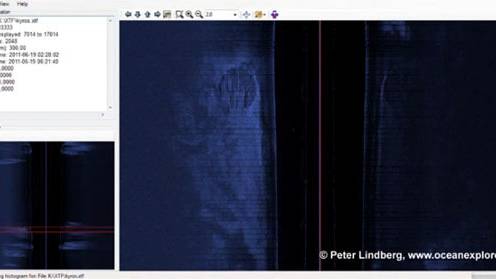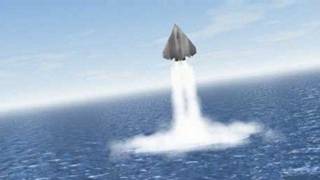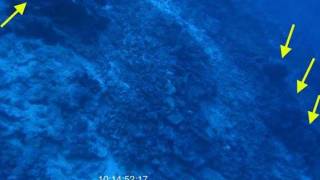UFO Found on Ocean Floor?
Source: space.com
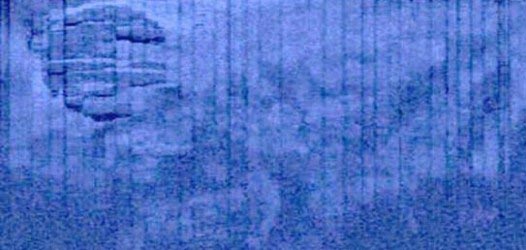
An ocean exploration team led by Swedish researcher Peter Lindberg has found what some are suggesting is a crashed flying saucer. Lindberg’s team, which has had success in the past recovering sunken ships and cargo, was using sonar to look for the century-old wreck of a ship that went down carrying several cases of a super-rare champagne. Instead, the team discovered what it claims is a mysterious round object that might (or might not) be extraterrestrial.

Peter Lindberg’s team found what appears to be a crashed flying saucer on the ocean floor.
CREDIT: www.oceanexplorer.se
Lindberg explained to local media that his crew discovered, on the 300-foot-deep ocean floor between Finland and Sweden, "a large circle, about 60 feet in diameter. You see a lot of weird stuff in this job, but during my 18 years as a professional I have never seen anything like this. The shape is completely round."
Adding to the mystery at the bottom of the Gulf of Bothnia, Lindberg said he saw evidence of scars or marks disturbing the environment nearby, suggesting the object somehow moved across the ocean floor to where his team found it.
Video from: YouTube.com
It’s not clear what to make of this report, or the video of the sonar scan that shows the object, but Swedish tabloids and Internet UFO buffs have had a field day. Some suggest the object is a flying saucer of extraterrestrial origin (and the seafloor scars were dug up when it crashed), though of all the things that might create a round sonar signature, that seems to be among the more outlandish.
It might be a natural feature formation, or possibly a sunken, round man-made object.
Lindberg’s claim that the object "is perfectly round" may or may not be accurate; while it looks round from the information so far, the resolution of the sonar image was not high enough to verify that it is indeed round. And while the lines that appear to be leading to (or from) the feature may suggest some sort of movement, it’s also possible they have nothing to do with the object.
Lindberg himself did not offer an extraterrestrial origin, though he did speculate it might be a "new Stonehenge."
This is not the first time a sunken object has been presented as the solution to a mystery. Take, for example, the famous underwater mystery of the "Bimini Road," a rock formation in the Caribbean near the Bahamas that resembles a road or wall. Many New Agers and conspiracy theorists claimed the rocks are too perfectly shaped to be natural, and either were made by an unknown civilization or are possibly a relic from the lost city of Atlantis.
In fact, geologists have identified the blocks as unusually shaped, but perfectly natural, weathered beach rock.
It’s also worth noting that UFOs may not be saucer-shaped. The famous "flying saucer" description of the first UFOhas since been revealed as a reporting error.
Lindberg said his team has neither the interest nor the resources to further investigate the anomaly. Deep ocean research is time-consuming and expensive. If the object were indeed a flying saucer, recovering it could potentially be worth millions or billions of dollars. If it’s a natural formation, on the other hand, it would probably be a waste of time and money.
Article from: space.com
Video from: YouTube.com
Ed Note: "If the object were indeed a flying saucer, recovering it could potentially be worth millions or billions of dollars." (But we’re not going to investigate this further)??
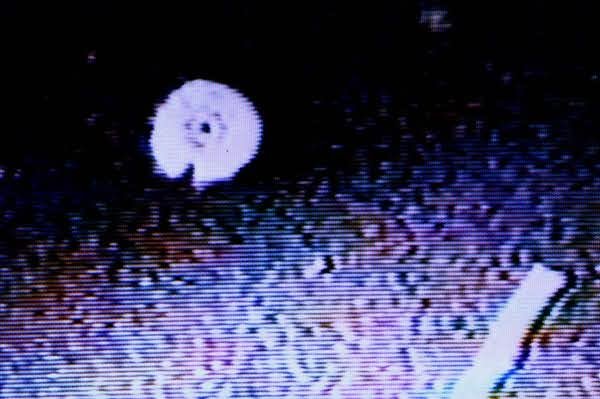
While withholding judgement, it’s interesting to note that this underwater phenomenon’s shape echoes that found in the NASA footage of their STS-75 Space Tether Experiment.
The space tether experiment, a joint venture of the US and Italy, called for a scientific payload--a large, spherical satellite--to be deployed from the US space shuttle at the end of a conducting cable (tether) 20 km (12.5 miles) long. The idea was to let the shuttle drag the tether across the Earth’s magnetic field, producing one part of a dynamo circuit. The return current, from the shuttle to the payload, would flow in the Earth’s ionosphere, which also conducted electricity, even though not as well as the wire.
The first attempt at the tether experiment ended prematurely when problems arose with the deploying mechanism, but the one on February 25, 1996, began as planned, unrolling mile after mile of tether while the observed dynamo current grew at the predicted rate. The deployment was almost complete when the unexpected happened: the tether suddenly broke and its end whipped away into space in great wavy wiggles. The satellite payload at the far end of the tether remained linked by radio and was tracked for a while, but the tether experiment itself was over.
The resulting footage of the tether drifting is space remains controversial. Those at NASA claim the objects swirling in the camera are ’debris’, whereas some suggest the objects are craft or intelligently driven objects.
Video from: YouTube.com
Video from: YouTube.com
The shape of the ’debris’/’crafts’ is strikingly similar to that of the ’UFO’ found underwater in Scandinavia.
No matter what the ultimate explanation, it’s fascinating to say the least.
~E
